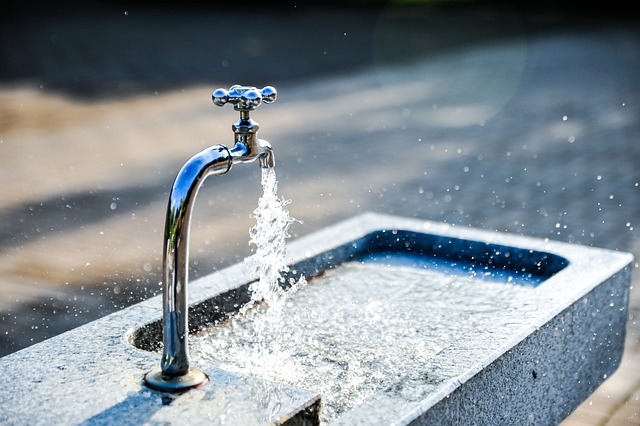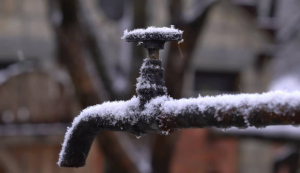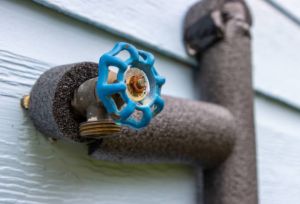Winterizing your faucets is crucial for protecting your pipes from damage during freezing temperatures. When water freezes, it expands, which can cause pipes to crack or burst, leading to costly repairs and water damage. By taking this simple precaution in late fall, before the cold weather sets in, you can safeguard your home and avoid the stress of dealing with frozen or broken pipes. The best part? Winterizing your outdoor faucets is an affordable and straightforward DIY project that requires only a few materials and a little time.
In this article, we’ll guide you step-by-step through the process of winterizing your outdoor faucets using faucet covers. These covers provide an extra layer of insulation that helps keep freezing temperatures at bay. We’ll explain how to properly disconnect hoses, drain any remaining water, and securely install the covers to ensure maximum protection. We’ll also share some practical tips to ensure the job is done thoroughly, such as checking for leaks or cracks in your faucets before covering them, and how to identify any problem areas in your plumbing system.
Taking this preventative step not only saves you time and money in the long run but also gives you peace of mind throughout the winter season. Stay ahead of the cold, protect your plumbing, and enjoy a worry-free winter with our easy-to-follow guide!
Steps to Winterizing Your Outdoor Faucets
Preparing your outdoor faucets for winter is essential to prevent your pipes from freezing or bursting. To complete this task, you’ll need a few tools and materials: a bucket, a wrench, insulated outdoor covers, and faucet repair supplies. Follow these steps carefully to ensure the process is done correctly and effectively:
- Make sure to disconnect hoses: Before winter arrives, make sure to remove all hoses, splitters, and fittings attached to your faucet. Leaving them in place can trap water, increasing the risk of freezing and potential damage. Taking this simple step can help protect your equipment during the colder months.
- Check if your faucets have leaks:
Always check spigots, yard hydrants, and other fixtures for any leaks or drips. If you find leaks, make sure to repair and replace the fixtures right away before it starts freezing. If you find dripping water, the spigot may have a leaky washer or cartridge that can cause freezing in the spigot or the pipe that is feeding it.
- Drain the spigot and pipes: Make sure to shut off the water line and drain the water into a bucket while the temperature is above freezing. Start by shutting off the interior shut-off valve to the water line that goes into the spigot. Then open the spigot and then leave it open for a few hours until the water inside the pipe fully drains. Once the water is fully drained, close the spigot.
- Install the outdoor faucet covers: To protect your outdoor faucets during winter, always use faucet covers. Choose a properly fitted cover and secure it tightly over the faucet, ensuring there are no gaps between the cover and your house. If you’re using a cloth cover, pull the drawstring snugly around the faucet, keeping it as close to the house as possible. Even frost-free spigots, while designed to withstand most freezing temperatures, are not entirely frost-proof and should be covered for added protection. This simple step helps safeguard the gaskets and washers inside the spigot, ensuring their longevity and functionality throughout the colder months.
Tips for Prevent Outdoor Faucets from Freezing
Protecting your outdoor faucets from freezing is essential to prevent costly damage. To winterize them effectively and prevent them from freezing, here are some key tips to ensure your faucets stay safe throughout the colder months:
Use a freeze-proof faucet: Freeze-proof faucets are an excellent solution for preventing long-term plumbing issues caused by freezing temperatures. These faucets come in various lengths to accommodate different foundation wall widths or interior connection points, ensuring a proper fit for your specific setup. When the faucet is turned off, any remaining water automatically drains out, reducing the risk of freezing and damage. Be sure to select a model that suits your needs for optimal performance and protection.
- Choose the right faucet cover: Faucet covers come in two main shapes: square and dome. They are typically crafted from rigid thermal foam and equipped with flexible gaskets, allowing them to easily fit over outdoor faucets. Alternatively, you can opt for flexible bag-style covers made from thick, durable fabric filled with insulation for added protection.
- Add insulation: For added protection during winter, you can place extra loose insulation inside your faucet cover to keep it dry and warm. While this step isn’t essential, as a faucet cover alone is typically sufficient to prevent freezing, it can provide extra peace of mind in colder conditions.
- Keep your house warm: A faucet cover works by preserving the heat from your home and interior pipes, keeping it from escaping through the outdoor faucet. The insulated cover acts as a barrier, preventing heat loss and protecting the faucet from freezing temperatures. However, if your home is unheated or your plumbing isn’t in use, the cover may not function effectively.
- Seal against the house: To ensure maximum thermal protection, press the faucet cover firmly against the house, making sure there are no gaps.
- Know where the main water shut-off is for your home: The water flowing to your outdoor faucet originates from your home’s plumbing system, and all these pipes are equipped with a shut-off valve. It’s essential to know the location of this valve so you can quickly turn off the water in case of a leak. Typically, the valve is located inside your home—either in the basement, near the foundation, or on the street-facing side of the house. If your home doesn’t have an indoor shut-off valve, it becomes even more important to insulate your faucet cover to prevent potential issues.
Professional Water Damage Restoration
Winterizing your outdoor faucets is a simple yet essential step in protecting your home from costly plumbing damage during freezing temperatures. By following the proper steps—disconnecting hoses, checking for leaks, draining water, and using insulated covers—you can safeguard your pipes and prevent freezing or bursting. Taking these precautions not only saves you time and money but also provides peace of mind throughout the winter season. With a little effort and preparation, you can ensure that your outdoor faucets remain in good condition, keeping your plumbing system safe and functional year after year.
At ServiceMaster S&R Systems, our experts are here to handle water damage with speed and precision. Whether you’re dealing with a frozen or burst pipe, we have the tools, techniques, and years of experience needed to restore your property effectively. From cleanup to drying and full restoration, we ensure your home is returned to its original condition. With quick response times and a commitment to quality, our technicians are always prepared to address water damage and provide reliable solutions for your peace of mind.
Give us a call at (630) 896-0030 for emergency water damage restoration services.



